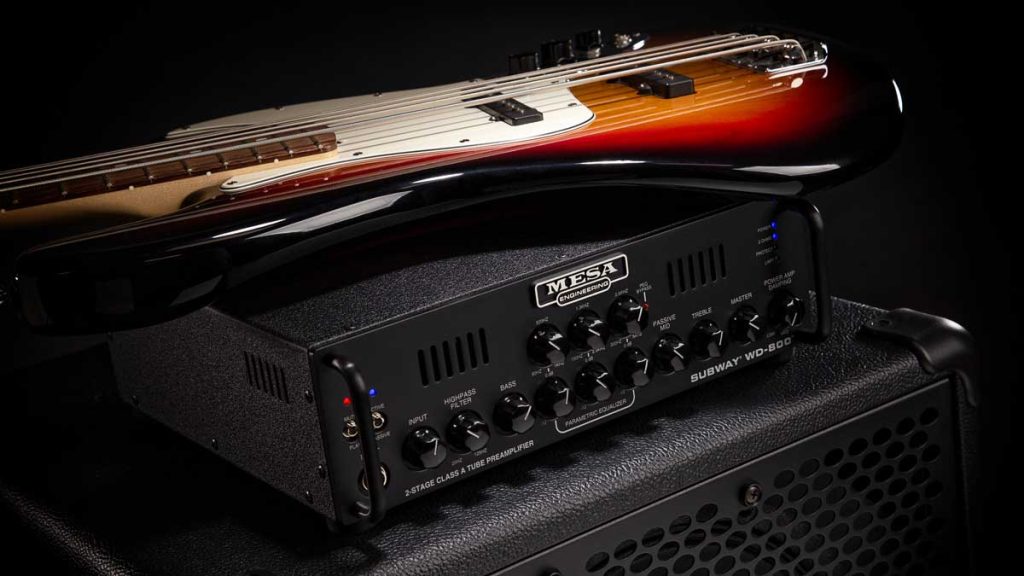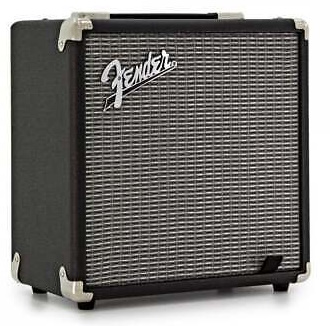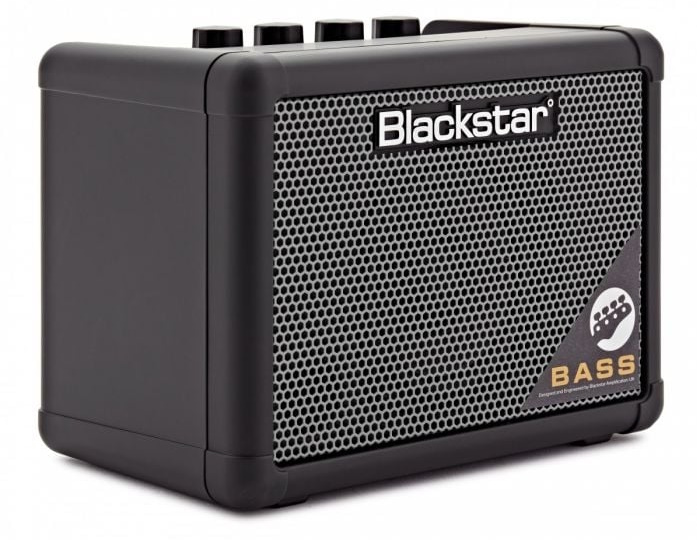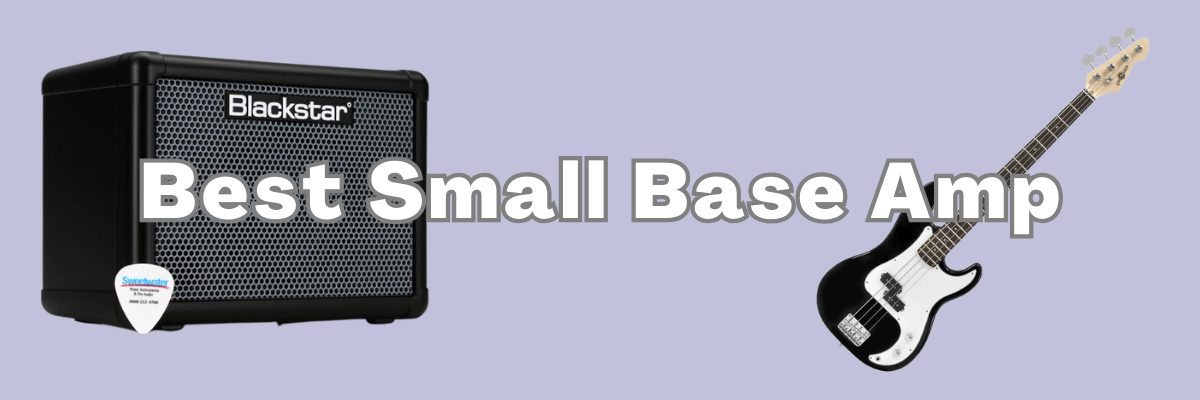Best Small Bass Amp.
For bassists looking to practice, jam, or play small gigs without breaking the bank or their backs, finding a small, lightweight bass amp is essential.
Table of Contents
Hi. Ian here and welcome to this article on the best small bass amps.

If you’re a bassist, you know that a good amp is essential for getting the best sound out of your instrument. But what if you’re short on space or need an amp that’s easy to transport? That’s where small bass amps come in.
Small bass amps are typically lightweight and portable, making them ideal for practice, rehearsals, and small gigs. They can also be a good choice for home recording. But with so many different small bass amps on the market, it can be tough to know which one is right for you.
In this article, I’ll take a look at some of the best small bass amps on the market. I’ll also give you some tips on how to choose the right amp for your needs.
Here are a few of the things to consider when choosing a small bass amp:
- Wattage: Wattage is a measure of an amp’s power output. The higher the wattage, the louder the amp will be. For practice and rehearsals, you’ll probably want an amp with at least 25 watts. If you’re planning on playing gigs, you’ll need an amp with more power, at least 100 watts or more.
- Speaker size: The size of the speaker in an amp will also affect its sound. Larger speakers produce more bass frequencies, so if you’re looking for a big, deep bass sound, you’ll want an amp with a larger speaker.
- Features: Some small bass amps come with additional features, such as EQ controls, effects loops, and headphone jacks. Consider which features are important to you and choose an amp that has them.
Here are a few of the best small bass amps on the market:
- Fender Rumble 40 Bass Combo: The Fender Rumble 40 is a popular choice for bassists of all levels. It’s lightweight and portable, but it still packs a punch with 40 watts of power. It also has a three-band EQ and a built-in overdrive circuit.
- Ampeg Rocket Bass RB-110 Combo: The Ampeg Rocket Bass RB-110 is another great option for bassists looking for a small, portable amp. It has a classic Ampeg sound and a variety of features, including a three-band EQ, a contour switch, and a headphone jack.
- Hartke HD75 Bass Combo: The Hartke HD75 is a good choice for bassists looking for a small, portable amp with a big sound. It has 75 watts of power and a 10-inch speaker. It also has a three-band EQ and a contour switch.
- Phil Jones Bass M7 Micro Combo: The Phil Jones Bass M7 Micro is a great choice for bassists who need a very small and portable amp. It’s only about the size of a lunchbox, but it still produces a great sound. It also has a three-band EQ and a headphone jack.
- Blackstar FLY 3 Bass Combo: The Blackstar FLY 3 Bass is a great budget-friendly option for bassists looking for a small, portable amp. It’s only 3 watts of power, but it’s still loud enough for practice and small rehearsals. It also has a two-band EQ and a headphone jack.
Factors like power output, speaker size and configuration, EQ and tone-shaping controls, additional inputs for devices and pedals, and built-in effects will all impact an amp’s versatility, sound quality, and performance. Weighing less than 50 pounds, these small bass amp heads and combos provide surprising volume and rich low-end, perfect for practice, jam sessions, and smaller club gigs.
Whether you need an ultra-portable amp for bedroom practice, a backup gigging amp, or a lightweight main amp for small venues, this guide will help you discover the best small bass amps available today. Our top picks, detailed reviews, and comparison of features will make it easy to find the perfect compact bass amp to suit your budget and needs as a bassist.
Finding the Perfect Small Bass Amp for Your Needs
As a bassist, having a compact yet powerful amp is crucial for practice, jam sessions, and smaller gigs. But with so many options on the market, it can be tough to determine which small bass amp is right for you. This comprehensive guide will walk you through the key factors to consider and reveal the top small bass amps under 50 watts.
What to Look for in a Small Bass Amp
When evaluating small bass amps, keep these features in mind:
- Power – How many watts do you need? For quiet practice, 15-30 watts may suffice. For jamming or gigs, 30-50 watts gives you more volume.
- Speaker Size – 10″ speakers are common for small amps. Make sure it can handle your amp’s low end.
- EQ Controls – Look for a 3-band EQ at minimum to shape your tone. Some amps offer 4- or 5-band EQs for more flexibility.
- Inputs and Channels – Having auxiliary and headphone inputs is useful. Separate channels allow blending tones.
- Effects – Some amps have built-in effects like overdrive and chorus to expand your options.
- Weight – Amplifiers under 50 pounds will be easily transportable to jams or shows.
The Best Small Bass Amps
After extensive research, these small bass amps rise above the competition:
Fender Rumble 40 – Legendary portable amp with flexible EQ and overdrive effect.
Ampeg BA-108 – Affordable option with 70 watts powering a big bass tone.
Hartke HD25 – Unique aluminum speakers provide a clear, precise tone at 25 watts.
Gallien-Krueger MB112-II – Powerful 50-watt amp with flexible 4-band EQ.
Phil Jones Bass Cub II – Ultra lightweight at just 15 pounds yet delivers rich low end.
Finding the right small bass amp comes down to your personal needs and preferences. With this advice and top recommendations, you can now shop with confidence and find an amp that provides a stellar bass tone in a portable and affordable package.
Understanding Small Bass Amps
Demystifying Small Bass Amps: A Guide for Bassists
As a bass player, having the right amp to suit your practice and performance needs is crucial. When just starting out or playing smaller venues, a small bass amp under 50 watts offers portability and affordability. But with so many options, it can be confusing to know what to look for in a small bass amp. This guide will break it down so you can make an informed decision.
What Exactly is a Small Bass Amp?
Amplifiers with a power output of 50 watts or below
Lightweight and compact design, usually a combo amp head and speaker together
Well-suited for practice, jamming, and smaller gigs
Provides great tone and volume for small spaces but not massive venues
Key Features to Consider
When researching small bass amps, keep an eye out for these specs and features:
Power – 30-50 watts gives you flexibility. 15-30 watts for just practice.
Speaker Size – 10″ is standard but make sure it can handle low frequencies.
Inputs – Look for aux input for playing music. Preamp inputs allow blending tones.
EQ Controls – At minimum a 3-band EQ, but 4- or 5-band is better for shaping tone.
Effects – Some amps have built-in overdrive, chorus, compression, and more.
Weight – Under 50 pounds is easily portable to jams, gigs, or band practice.
Setting Proper Expectations
While small amps excel at many things, be realistic about their capabilities:
May not provide enough volume for large venues or stage monitoring
Limited headroom compared to 100+ watt amps
Won’t rattle the walls like massive 8×10 or 4×10 cabs
If you need to compete with drums or be heard in larger clubs, a bigger amp may be required. But for most practice and smaller gigs, a quality small bass amp will get the job done!
Now that you understand what to look for and the strengths of small bass amps, you can shop for one with confidence.
Weight Considerations in Small Bass Amps
The Importance of Weight When Choosing a Small Bass Amp
As a bassist, having a lightweight, portable amp is a huge advantage for hauling to practice, gigs, or jam sessions. But how much does weight matter when selecting a small bass amp? This guide will break down the key considerations.
Why Weight Matters
- Portability – A heavy amp becomes a literal pain to carry around. Lighter amps are essential for mobile bassists.
- Ongoing fatigue – Lugging a heavy amp to every show can gradually take a toll on your back and body over time.
- Transport logistics – Fitting a compact, lighter amp in a smaller car or taxi is way easier than a bulky heavy option.
- Load-in and setup – Getting equipment quickly on and off stage is easier with a lightweight rig.
- Going wireless – Very small and light amps can potentially be worn as a backpack for total freedom.
What to Look for in a Lighter Small Amp
When researching small bass amps, keep an eye out for these specs:
- Total weight under 50 pounds – This ensures it’s reasonably portable.
- Combo amp design – Having the head and speaker in one unit saves weight.
- Materials – Look for lighter materials like plastic, aluminum, or fiberglass.
- Power – Lower watt amps (15-40 watts) tend to weigh less than larger amps.
- Speaker size – 10″ speakers or smaller help reduce weight.
With these tips in mind, you can feel confident choosing a small bass amp that sounds great but won’t break your back.
Key Features To Look For
Essential Features for the Perfect Small Bass Amp
Choosing the right amp that balances portability, power, and great tone can be a challenge. As a bassist, you want an amp well-suited for practice, jams, and smaller gigs. Here are the top features to look for in a small bass amp:
Power Output
- 30-50 watts gives you flexibility and volume for small venues
- 15-30 watts works well for quiet practice sessions
- Make sure the speaker can handle the amp’s power
Speakers
- A 10″ speaker size is standard for compact bass amps
- Confirm the speaker handles your preferred low frequencies
- Some amps allow adding an external cabinet for more boom
Inputs and Channels
- Auxiliary input allows playing music through the amp
- Multiple channels allow the blending of tones and effects
- Look for a headphone output for silent practice
EQ Controls
- At a minimum, a 3-band EQ gives you basic tone-shaping
- 4- or 5-band EQs provide more precision over lows, mids, highs
Built-in Effects
- Some amps offer effects like overdrive, chorus, compression, and more
- Effects expand your tonal options without needing pedals
With these key features in mind, you can zero in on a small bass amp that suits your needs.
Using Small Bass Amps for Practice
Getting the Most Out of Your Small Bass Amp for Practice
One of the top uses for compact bass amps under 50 watts is personal practice. Their portable size and lower volume are perfect for home use. Here are tips for making the most of a small bass amp when practicing:
Match the Volume to Your Space
- Use lower wattages (15-30W) for quiet basement and bedroom sessions.
- Opt for 40-50W if you need to be loud enough to hear over a drum machine.
- Let the amp breathe – don’t cram it into a corner or tiny closet.
Use the DI Output
- The DI out bypasses the amp’s tone and outputs a clean signal.
- Allows recording bass tracks directly to capture your playing.
- Route the DI into an audio interface or DAW for late-night recording.
Add Some Effects
- Many practice amps include built-in effects like overdrive, chorus, etc.
- Effects like reverb can make a small amp sound bigger.
- Get creative with effects while dialing in your tone.
Consider an External Cab
- Use the external speaker output to add an extra cab for more low-end.
- Select a compact 1×10″ or 1×12″ extension cab that matches the ohms.
- Run both the internal and external cabs in tandem.
With the right practice amp and some creative usage, you can transform even a small basement into your own personal bass workshop!
The Role of a Compressor in Small Bass Amps
Harnessing the Power of Compression in Small Bass Amps
Many modern small bass amps come equipped with built-in compression, which can be a hugely beneficial effect for bassists. But what exactly does a compressor do? Here’s a breakdown of how to make the most of compression in a small amp.
What a Compressor Does
- Evens out your attack and sustain
- Brings louder dynamics under control
- Raises lower dynamics up closer to louder ones
- Results in a more consistent overall level
Benefits for Bassists
Using compression wisely can:
- Add punch and tightness to your bass lines
- Help control low-end boominess
- Allow boosting overall gain without clipping
- Make your playing sit better in the mix
- Enable longer sustain on notes
Ideal Compressor Settings
When dialing in compression on your amp:
- Start with lower ratios (2:1 or 4:1)
- Use fast attack and moderate release times
- Adjust the threshold to engage compression gently
- Avoid excessive amounts which can flatten dynamics
Utilized properly, the built-in compression in many small bass amps can take your tone to the next level. Subtly evening out your dynamics results in a tighter, more controlled, and consistent bass sound. Give it a try!
Importance of Tone Control in Small Bass Amps
Dialing in Your Tone – Why EQ Matters in Small Bass Amps
Amps aimed at bassists pride themselves on offering stellar low-end tones. But what specific tone-shaping controls should you look for when selecting a small bass amp? Here’s a breakdown of which EQ features matter most:
Must-Have Tone Controls
- Volume – Sets your overall loudness level.
- Gain – Adjusts the preamp’s input sensitivity and overdrive.
- Bass – Boost here for more low frequencies and bottom end.
- Middle – Shape mids to cut through the mix.
- Treble – Add sparkle and snap to your high end.
Advanced EQ Options
Higher-end amps include:
- Semi-parametric EQ – Swept midrange frequency control.
- Graphic EQ – Multi-band tone adjustment.
- Additional bands – 4- and 5-band EQs instead of just 3-band.
- Mid shift – Alters the center mid-frequency.
Why EQ Matters
Robust EQ enables:
- Customizing your ideal bass sound.
- Dialing in the perfect tone for your instrument, play style, and genre.
- Adapting your sound for different venues and band mixes.
Don’t settle for limited tone-shaping controls. Seek out a small bass amp with maximum EQ flexibility so you can always achieve the bass tone you desire.
Footswitchable Overdrive
Reaping the Benefits of Footswitchable Overdrive
Many modern bass amps now include foot-switchable overdrive or distortion effects, adding versatility to your tonal options. What are the advantages of having this effect accessible via a footswitch?
Convenience Factor
Having overdrive controllable with a footswitch allows:
- Hands-free activation while playing
- Quickly engaging the effect in the moment
- Stomping on/off for creative transitions
Performance Benefits
Footswitchable overdrive offers:
- A fun way to boost solos with just a stomp
- Lets you get gritty and then quickly clean up
- Saves tap dancing around pedals on stage
- Allows rocking out without hands leaving the instrument
Sound Quality
Amp-based overdrive often sounds better than pedals because:
- It’s dialed in specifically for bass
- Retains the amp’s natural tone and EQ
- Avoids signal loss from pedal chains
While overdrive effects aren’t for every bassist, having the option foot-switchable makes the capability far more usable. The next time you shop for a small bass amp, look for one equipped with this flexibility. Your feet and ears will thank you!
The Role Of Wattage
Understanding the Role of Wattage in Bass Amps
When shopping for bass amplifiers, you’ll see a wide range of wattages offered. But how much power do you really need? Here’s a breakdown of how wattage impacts bass amps:
Lower Wattages
- 15-30 watts works well for quiet practice sessions and basement jams
- Allows pushing some volume if needed while retaining portability
- Perfect for general home use and recording directly via DI box
Medium Wattages
- 30-50 watts offers flexibility for small to medium gigs
- Provides plenty of headroom and a clean tone for most playing situations
- Can keep up with reasonably loud drummers
Higher Wattages
- 50-200+ watts necessary for large venues and concerts
- Offers ample volume for stage monitoring and competing with guitar amps
- Prevents distortion at extremely loud volumes
Consider Your Needs
Choose your wattage based on:
- Venues and bandmates you’ll be playing with
- If amplification power is provided via the PA system
- Desired volume levels and tonal characteristics
Select a wattage suitable for your real-world playing needs while balancing portability. And remember – wattage only indicates potential loudness, not sound quality!
Top Picks For Small Base Amps
Our Top Recommendations: Best Small Bass Amps
In the search for killer tone in a portable package, these small bass amps rise above the competition:
Fender Rumble 40
- Legendary Fender low-end in a lightweight 40-watt combo.
- Onboard overdrive and 3-band EQ for dialing in tones.
- The perfect balance of size, power, and versatile sound.
Ampeg BA-108v2
- Affordable but powerful 70-watt Ampeg amp.
- Punchy 10″ speaker handles low frequencies with ease.
- Vintage Ampeg tone perfect for rock, metal, and blues.
Trace Elliot ELF
- Advanced 500-watt class D power amp in miniature chassis.
- Weighs only 3.5 pounds but delivers a mighty low end.
- Ideal for bassists who want to travel light without sacrificing full sound.
Orange Micro Terror
- Tiny lunchbox 20-watt head packs a surprising punch.
- Shape your sound with built-in distortion and EQ controls.
- Match it with a compact cab for the ultimate portable rig.
Gallien-Krueger MB110
- Lightweight yet capable 50 watt combo amp.
- Customizable via the GK preamp and 4-band EQ.
- Handles small gigs with rich, deep bass tones.
This list covers options at various price points and wattages to suit different needs and budgets. But any of these stellar amps will serve bassists remarkably well on stage or in the practice room.
Fender Rumble 15: A Detailed Review

Fender Rumble 15 Bass Amp – Ideal Practice Amp for Beginners
If you’re seeking an affordable, portable practice amp, the Fender Rumble 15 is a great choice. Here’s an in-depth look at what this little amp offers:
Overview
- 15 watts
- 8” Fender Special Design speaker
- Weighs only 17 pounds
- Control knobs for Gain, Low, Mid, High
Key Features
Some standout features include:
- Iconic Fender bass tone
- Surprising volume and low end for its size
- Aux input for playing tracks through the amp
- Headphone output for silent practice
- Overdrive button adds grit and sustain
Performance
Despite its compact form, the Rumble 15 provides:
- Solid low frequencies that won’t distort
- Crisp highs and scooped mids
- Ability to keep up in small jam sessions
- Enough volume for bedroom practice
Drawbacks
Downsides to note:
- Lack of effects like reverb or chorus
- Not enough power for band rehearsals or gigs
Overall
For the price, the Fender Rumble 15 is perfect for new bassists or travelers needing minimal bulk. It provides usable tone shaping and satisfying bass fundamentals. While more advanced players will require something beefier, this little amp is a great practice solution.
Blackstar Fly 3 Bass: A Comprehensive Analysis

Blackstar Fly 3 Bass Amp – Mighty Sound in a Mini Package
Don’t let its diminutive size fool you – the Blackstar Fly 3 Bass punches well above its weight. Here’s an in-depth look at this portable powerhouse:
Overview
- Just 3 watts but tons of tonal options
- Weight under 3 pounds
- Aux input, headphone out, speaker out
- Blackstar’s ISF tone-shaping control
Key Features
What you get:
- Surprisingly bold bass tone from a 2” speaker
- Robust EQ section for tweaking lows, mids, highs
- Effects including chorus, flanger, delay, reverb
- Runs on batteries for ultra-portable practice
Performance
Despite being battery-powered, it delivers:
- Rich, warm low frequencies with thump
- Ability to hang with drums acoustically
- Up to 4 hours of playing per set of batteries
Drawbacks
Limitations to consider:
- Not enough power for jamming with others
- Small speaker limits fullness of tone
- Battery life is not as long as AC power
Overall
For solo practice through phones or as a backup amp, the Fly 3 gives you mighty bass fundamentals in an ultra-portable package. It’s unmatched for on-the-go convenience. Guitarists love it too as an all-purpose practice amp.
Frequently Asked Questions
What speaker size is best?
10″ speakers are ideal for small bass amps.
Combo amp or separate head/cab?
Combos are best for portability.
How important are built-in effects?
Nice bonus but core tone matters most.
What’s a DI output and why is it useful?
DI lets you record dry signals for re-amping. Great for home studios.
Conclusion
Finding Your Perfect Small Bass Amp
For bassists seeking a lightweight, portable amplifier optimized for practice, jams, recording, and smaller club gigs, choosing the right small bass amp that fits your needs is crucial. The ideal amp will balance power, projection, tone-shaping controls, and portability.
Evaluate your specific amplification needs – do you require enough volume to compete with a loud drummer or guitar amp? Or is this mainly for bedroom practice? That will determine if you need 30 watts for practice, or closer to 50 watts for gigging.
Make sure any amp you choose includes at least a 3-band EQ for dialing in your tone, along with extras like onboard compression and overdrive effects. The more tone-shaping controls, the better you can craft your ideal bass sound. Consider useful features like multiple inputs for devices, headphone jacks for quiet practice, and footswitch jacks for effects.
Portability is also key. Look for a total weight under 50 pounds so the amp stays reasonable to transport to shows. The lighter the better for avoiding fatigue and strain over time. Select a combo amp with both the head and speaker cabinet combined for minimal size.
Reputable brands like Fender, Ampeg, and Hartke make exceptional small bass combos that are quality-built to provide killer tones in a tiny package. Set your budget, determine your must-have features, and assess your long-term needs, then peruse the top options within your criteria.
With research and smart choices, you’ll find the perfect small bass amp to take your playing to the next level.
